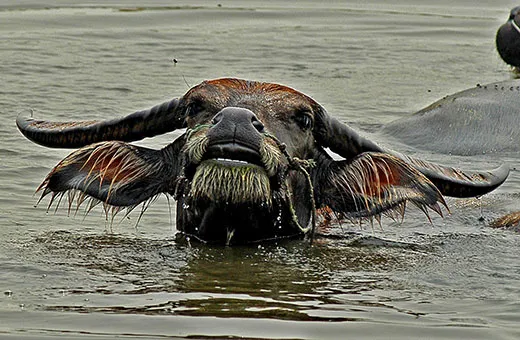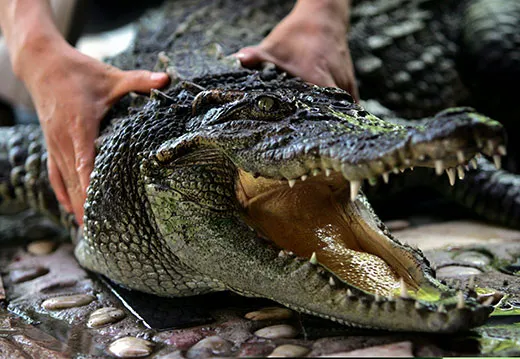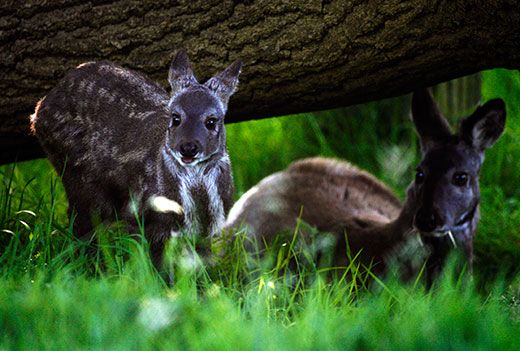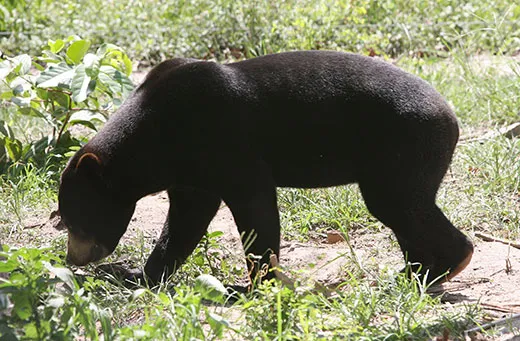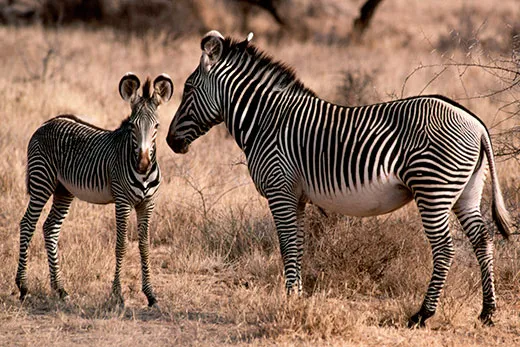Ten Threatened and Endangered Species Used in Traditional Medicine
The demand for alternative remedies has given rise to a poaching industry that, along with other factors, has decimated animal populations
/https://tf-cmsv2-smithsonianmag-media.s3.amazonaws.com/filer/Endangered-Species-Medicine-chinese-alligator-631.jpg)
Species are disappearing so quickly that scientists now debate whether the earth is going through it’s sixth mass extinction. Plants and animals go extinct for a variety of reasons, including climate change, habitat destruction, hunting and the introduction of nonnative species. The use of animal parts in traditional medicine can also contribute to a species’ decline, despite there being no real evidence of the efficacy of these treatments. The rarity of a creature does not protect it from being killed in the name of “medicine”; it just raises the market price.
Rhinoceros
Rhino poaching reached epidemic levels in the 20th century, nearly driving all five species into extinction. But in the 1990s, China removed the animal from its list of ingredients approved for manufacturing medicines—rhino horn was supposed to relieve fevers and lower blood pressure, though any such effect was debunked by science—and rhino populations began to recover. That quickly changed a few years ago, though, after rumors began circulating in Vietnam that rhino horn had cured a VIP of terminal liver cancer. Poaching, particularly of black and white rhinos in South Africa, ramped up and the animals are threatened once again.
Water Buffalo
Purebred wild water buffaloes may already have disappeared from the world, scientists acknowledge. Domestic varieties or hybrids may be all that remain in Southeast Asia, according to some estimates, or there could be a couple of hundred pure water buffaloes left or possibly thousands. Researchers do agree, however, that the species is endangered. But that hasn’t stopped people from hunting them in places like Cambodia (the water buffalo is considered an alternative to rhino horn in the treatment of conditions ranging from fever to convulsions). And the water buffalo has already been eliminated from swaths of Laos, Bangladesh, Indonesia and Sri Lanka.
Chinese Alligator
This small, freshwater crocodilian species now numbers fewer than 200 in the wild, mostly restricted to a small reserve in the Anhui province of China, along the lower Yangtze River. Habitat destruction, particularly dam building, has devastated the alligator population, but hunting has also taken a toll. Alligator meat is promoted as a way to cure the common cold and to prevent cancer, and alligator organs are also said to have medicinal properties. Captive breeding, in an effort to restore the species, has proved successful, and there are now thousands of captive animals and new efforts to reintroduce them into the wild.
Asian Elephant
Asian elephants were once thought to be relatively immune to poaching—unlike their African relatives, only some males, instead of all adults, have ivory tusks—but that is not true. The animals are killed for their meat, hide, tusks and other body parts. In Myanmar, for example, small pieces of elephant foot are turned into a paste to treat hernias. A bigger concern, though, is loss of the Asian elephant’s natural habitat and increasing conflict between the animals and the growing human population.
Musk Deer
Seven species of musk deer are found in Asia, and all are on the decline. Thousands of male musk deer have been killed for their musk pods, a gland that produces the musk that gives the animals their name and has been used in perfumes. The musk, a brown, waxy substance, can be extracted from live animals, but “musk gatherers,” who can get around $200 to $250 per gland from foreign traders, find it easier to kill the deer. Though perfume makers have found synthetic alternatives to musk, the hunting hasn’t stopped. Musk deer meat is considered a local delicacy, and musk is still used in traditional medicines for treating cardiac, circulatory and respiratory problems.
Sun Bear
The sun bear is just one of several bear species killed for its gallbladder, which is used for treating everything from burns to asthma to cancer. Their population has declined by more than 30 percent in the past three decades due to hunting and loss of their forest habitat. The killing of sun bears is illegal throughout their home range in Southeast Asia, but these laws are rarely enforced. In addition, commercial farms that raise bears to milk their gallbladders for bile restock by capturing wild bears.
Grevy’s Zebra
The Grevy’s zebra once roamed across East Africa, but its population dropped from 25,000 in the 1970s to about 2,500 today. Humans killed the animals for their skins and to eliminate competition for water between the zebras and livestock. The zebras can now be found only in northern Kenya and a few parts of Ethiopia. The Kenyan government developed a plan in 2008 to conserve the remaining population. Included in the effort was the recognition of the need to work with traditional healers who use the zebra’s meat and fat to treat diseases such as tuberculosis.
Tiger
While tigers originally lived across Asia, from Turkey to the eastern coast of Russia, their range has now dwindled to roughly a dozen countries in East and South Asia, and as few as 3,200 tigers may be left in the wild. Their decline is the result of the use of tiger skins, bones, teeth and claws in traditional medicine; they are believed to cure toothaches and protect against malicious curses, among other maladies. Criminal poaching syndicates can now get as much as $50,000 for the parts from a single tiger, and although international law bans the commercial trade of tigers, several countries permit the farming of tigers, further driving black-market demand.
Banteng
The population of wild banteng, a species of cattle native to southeast Asia, is now estimated to be somewhere between 2,000 and 5,000, a decrease of more than 90 percent since the 1960s. While land development and agriculture pose grave problems for the endangered species, poaching is a continued and direct threat, driven by the market for their horns, coveted as hunting trophies and use in traditional remedies. In 2003, banteng became the first endangered species to be successfully cloned, and researchers hope to use this technology for conservation purposes in the future.
Hawksbill Sea Turtle
Although Hawksbill sea turtles can be found in environments ranging from the Caribbean Sea to the waters surrounding Indonesia, their numbers have dwindled to the point that they are now listed as critically endangered. Poachers hunt hawksbills for a number of reasons, including for their shells, which have been distributed worldwide as travel souvenirs and incorporated into jewelry and other decorative items and for their oil, whose use in traditional medicine has increased in recent years. Bans on trading turtle products and various sting operations have achieved limited success in stopping the species’ decline.
